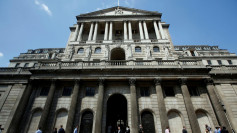The consumer price index in the United States surged in February. It is however expected to drop in the coming months as demand for certain goods and services could decrease. Prices were pushed mainly by supply shortages, which had led to a steady rise in the prices of some goods.
A report published by the Labor Department on Wednesday showed a rise in underlying inflation over the past couple of months, particularly during the global spread of the novel coronavirus. Despite this, the agency did not alter its financial market forecasts, which includes the further cutting of interest rates by the Federal Reserve during its policy meeting next week.
Last week, the Federal Reserve had implemented a 50-basis point emergency rate cut to alleviate fears of a recession brought about the continued spread of the coronavirus. Similar to the Labor Department, most economists are expecting further rate cuts, with some expecting it to reach zero by the end of the year.
New York-based economic research firm Capital Economics mentioned in a report that core inflation rates are stable but headline inflation is still set to drop even further during the coming months. These factors are expected to push the Fed to implement further cuts to support the country's economy in light of the continued spread of the virus.
A report from Moody's Analytics echoed the same sentiments, stating that the combination of negative supply and the demand shock will force fiscal policies and the fed to respond immediately to support the economy. The company expected the fed to cut interest rates to zero in the short-term.
In its report, the Labor Department revealed that the consumer price index in February had increased by 0.1 percent, matching the growth recorded in January. Despite the drop in prices of oil-based products, prices of food and accommodations still managed to push the index upwards. Over the past 12 months through February, the country's consumer price index rose by 2.3 percent year-on-year. The year-on-year jump in January of around 2.5 percent was the largest gain recorded since October 2018.
As the spread of the novel coronavirus continues, certain supply chains could be disrupted. These supply bottlenecks, which include trade with China, could result in shortages of certain goods such as medications and medical supplies, leading to further price increases. Travel restrictions imposed by the government to mitigate the spread of the epidemic are expected to greatly decrease demand for services such as entertainment, hotels, and travel.
The Trump administration announced on Wednesday that it is considering different steps to offset the economic impact of the viral epidemic. These steps will include possible tax relief measures to alleviate the pressure placed on heavily affected industries.






